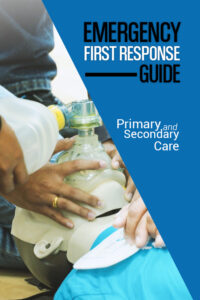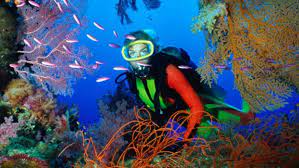Last Updated on April 30, 2022 by Dan
The emergency first responder course teaches you how to manage medical emergencies, provide emergency care and relieve choking in a safe way.
It’s a requirement that any diver who plans on doing deep dives has to complete the emergency first responder course. This is because of decompression illness (more commonly known as “the bends”).
For every 5 meters / 15 feet of depth, you go beyond 18 meters / 60 feet, time is doubled before making it safely back to the surface without the risk of developing decompression sickness. For example, if it would take 3 minutes at 5 metres / 15 feet deep to ascend safely; 10 metres/30 feet takes 6 minutes; 20 metres / 60 feet takes 12 minutes.
Emergency first responders are going to be able to provide better emergency care at depth, than divers who have not completed the emergency first responder course.
In emergency assistance, you’ll be asked by emergency medical technicians (EMTs) and doctors if you’ve taken a course in emergency training. If yes, they won’t ask what type of certification you’re carrying – which means your emergency first responder qualification will go a long way in emergency situations.
During the emergency first responder course, you’ll learn CPR on both children and adults as well as how to relieve choking. Besides this, emergency first responders will learn about spinal injuries, bones and joint injuries, snake bites and jellyfish stings along with many other emergency procedures.
In short – this emergency training is a must for every diver wanting to go deeper than 18 meters / 60 feet below surface level!
During any emergency where someone needs basic life support (BLS) and has cuts or bleeding, emergency first responders should not attempt to clear the airway.
There are three reasons emergency first responders shouldn’t clear the airway:
– The emergency first responder is not trained to do this emergency procedure
– Cuts and bleeding around or in the mouth increase risk of infection
– Emergency first responders simply don’t have enough hands fingers available (in solo emergency scenarios ) to keep an open airway while simultaneously applying pressure on large, deep wounds.
In emergency assistance, you’ll be asked by emergency medical technicians (EMTs) and doctors if you’ve taken a course in emergency training. If yes, they won’t ask what type of certification you’re carrying – which means your emergency first responder qualification will go a long way in emergency situations.
In short – this emergency training is a must for every diver wanting to go deeper than 18 meters / 60 feet below surface level!
We have produced a downloadable with 40 EFR practise questions for the text. You can find it here:
Emergency First Response Guide
40 Practise Questions for the Emergency First Response EFR Course

Read about the Rescue Diver Course here

